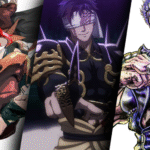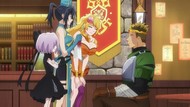Introduction
The story of “Naruto” is not just one of a young ninja seeking recognition; it is a cultural phenomenon that has transcended borders, inspiring millions worldwide. Created by Masashi Kishimoto, “Naruto” debuted as a manga series in 1999, quickly evolving from its humble beginnings in the pages of “Weekly Shōnen Jump” to become a cornerstone of modern anime and a defining series of the 21st century.
The Genesis of Naruto
Masashi Kishimoto’s journey began when he was a child with a deep passion for manga. Inspired by works such as “Dragon Ball” and “Akira,” Kishimoto sought to create a story that would resonate with audiences, blending action, adventure, and deep emotional struggles. The creation of Naruto Uzumaki, a spirited young ninja with dreams of becoming the Hokage, was deeply personal for Kishimoto, reflecting the challenges of acceptance and resilience.
Kishimoto meticulously crafted a sprawling world filled with diverse characters and intricate lore. The initial chapters introduced readers to the Hidden Leaf Village and its array of ninjas, each possessing unique abilities. As the story progressed, it delved deeper into themes of friendship, ambition, and the burden of legacy.
The Rise to Popularity
The manga’s popularity quickly surged, propelled by its accessibility and engaging storytelling. “Naruto” was serialized weekly, ensuring that fans were always on the lookout for the next installment. By 2002, the release of the anime adaptation further expanded its reach, captivating a broader audience with dynamic animations and a thrilling soundtrack.
The anime brought the characters to life, allowing fans to experience the emotions and growth of Naruto and his friends firsthand. The show’s vibrant animation and compelling arcs resonated deeply with viewers, securing “Naruto” a prominent place in the realm of anime.
Cultural Impact
The impact of “Naruto” extends far beyond its narrative. The series has cultivated a dedicated global fanbase, leading to conventions, merchandise, and fan art that celebrate its intricate world. Characters like Naruto, Sasuke, and Sakura have become icons, representing themes of perseverance, friendship, and the complexities of human relationships.
The series also sparked interest in Japanese culture, martial arts, and traditional folklore. Its exploration of the shinobi lifestyle, along with its rich lore, introduced audiences to concepts like ninjutsu, clans, and moral dilemmas, fostering a deeper understanding of Japan’s cultural heritage.
Legacy and Evolution
As “Naruto” concluded its original run in 2014, Kishimoto’s creation continued to evolve. The sequel series, “Boruto: Naruto Next Generations,” follows the adventures of Naruto‘s son, Boruto, introducing new challenges and themes while paying homage to the original series.
The ongoing legacy of “Naruto” is further exemplified through various adaptations, including novels, movies, and spin-off series that expand upon its universe. The revival of interest in the series through remakes and special events highlights its enduring appeal and cultural significance.
Conclusion
From its inception as a manga to its status as a beloved cultural phenomenon, “Naruto” represents the power of storytelling to unite and inspire. Masashi Kishimoto’s creation has touched the hearts of millions, reminding us all of the importance of perseverance, friendship, and understanding in a world that often feels divided. As the saga continues to evolve, the spirit of Naruto Uzumaki remains an enduring symbol of hope and ambition, ensuring that the tale of the young ninja will resonate for generations to come.







